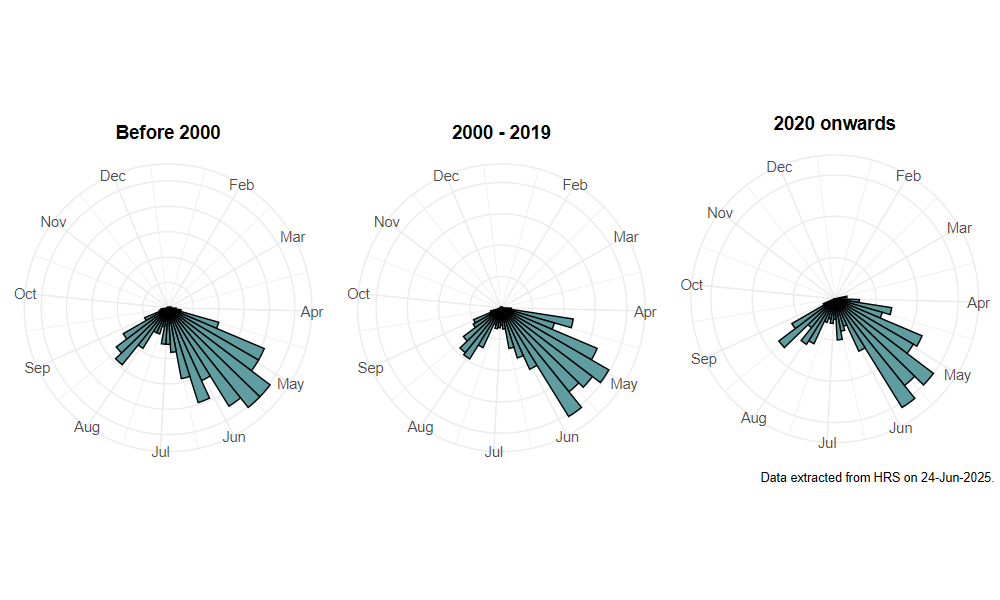Cheilosia fraterna (Meigen, 1830)
Identification
Identification difficulty = 3. ![]()
![]() according to Ball & Morris, 20241
according to Ball & Morris, 20241
Synonymy
The specimen described as Cheilosia species C of Stubbs & Falk (1983)2, seems to be a particularly small individual from the second generation of this species (Falk quoted in Stubbs, 19963).
Biology
The larva tunnels the stems and basal rosettes of Marsh Thistle Cirsium palustre. Adults are often seen visiting flowers such as buttercups Ranunculus sp. in marshy places and damp meadows. According to Speight (2017)4 this is a woodland species found in clearings, often along streams or rivers with tall herb communities.
Flight period
The following plots show the number of unique records per week excluding those reported to be of immature stages.

Distribution
Although widely distributed and frequent, this species seems to be more abundant in the north and west. It is also considerably less common in the East Midlands.

Trends
The following plots show the Frescalo TFactor vs year and a map of the rescaled frequency (all records) for the species.
-
Ball, S., & Morris, R. (2024). Hoverflies of Britain and Ireland. WILDGuides (3rd ed.). Oxford: Princeton University Press. ↩
-
Stubbs, A., & Falk, S. (1983). British Hoverflies: An Illustrated Identification Guide (1st ed.). Reading: BENHS. ↩
-
Stubbs, A. (1996). British Hoverflies. Second (revised and enlarged) supplement. Reading: BENHS. ↩
-
Speight, M. (2017). Species accounts of European Syrphidae ( No. 97). yrph the Net, the database of European Syrphidae (Diptera) (p. 294). Dublin: Syrph the Net publications. Retrieved from https://pollinators.ie/wordpress/wp-content/uploads/2018/05/StN-2017-Species-Accounts.pdf ↩